In the world of electrical engineering, AC circuits play a crucial role in the transmission and distribution of electric power. Understanding the basic concepts like cycle, amplitude, frequency, phase, and other related terms is essential for anyone dealing with alternating current (AC). These concepts form the foundation of how AC circuits operate, influencing everything from power generation to the functionality of household appliances. This article delves into the key terms associated with AC circuits, providing clear definitions and explanations to enhance your understanding of these fundamental concepts.
What Do Cycle, Amplitude, Frequency, Phase, Phase Angle, Alternation, and Period Mean?
Cycle
In an alternating current (AC), if the current flows in one direction, starting from zero to the maximum, and then returns to zero, followed by a flow in the opposite direction from zero to maximum and back to zero, this creates a wave, which is called a cycle.
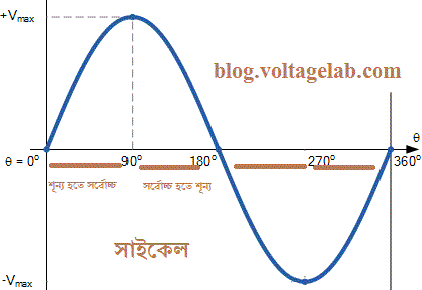
Amplitude
The maximum positive or negative value of a half-cycle of a variable quantity is called the amplitude.
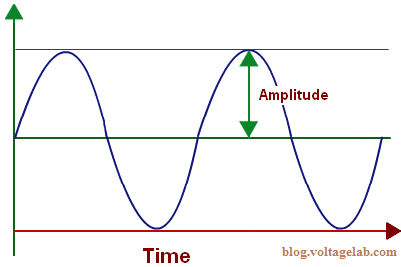
Frequency
The number of cycles a variable quantity completes in one second is called frequency, denoted by ‘f’.
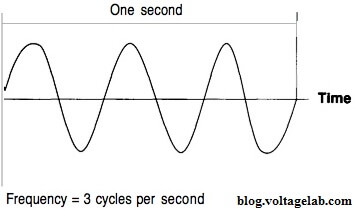
The unit of frequency is cycles per second or Hertz (Hz). The formula for determining frequency is f = 1/T.
Phase
The angular position of a variable quantity at any specific time is called phase.
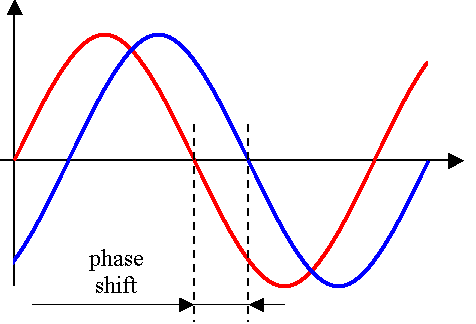
Phase Angle
The angle between the voltage and the current in an electrical circuit is called the phase angle. This angle is measured in degrees or radians.
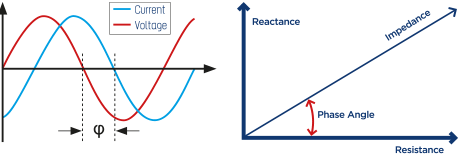
If the current lags behind the voltage, the phase angle is lagging. If the current leads the voltage, the phase angle is leading.
Alternation
A half-cycle or half-wave of a variable quantity is called an alternation.
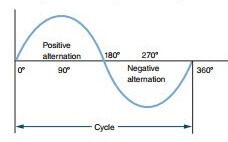
Period
The time required to complete one full cycle is called the period, denoted by ‘T’. The formula for determining the period is T = 1/f.
What Are Instantaneous Value, Average Value, and Maximum Value?
Instantaneous Value
The value of a variable quantity at any moment is called the instantaneous value.
Average Value
The average of the instantaneous values of a variable quantity over a half-cycle is called the average value. The formula for average value is 0.636 * Maximum Value.
Maximum Value
The maximum value of a variable quantity is reached when it goes from 0 to 90 degrees. The value at 90 degrees is called the maximum value.

What Is RMS (Root Mean Square) Value?
The RMS value of an AC current is the value of the DC current that produces the same amount of heat as the AC current in the same circuit for a given period of time.
The formula for RMS value is: √(Im^2/2)= Im/√2=0.707Im
What Is Form Factor?
The ratio of the RMS value to the average value of a sine wave is called the form factor. In simple terms, the form factor is the ratio of the RMS value to the average value. It is denoted by Kf.
Form Factor Kf = (RMS value/Average value)
= (0.707 * Maximum Value) / (0.636 * Maximum Value)
= 1.11
Maximum Value = 90 Degrees
What is Peak Factor?
The ratio of the maximum value to the RMS value of a sine wave is called the peak factor. It is denoted by Ka.
Peak Factor, Ka = (Maximum Value / RMS Value)
= (Maximum Value) / (0.707 * Maximum Value)
= 1.414
Maximum Value = 90 degrees
What is Active Power and Reactive Power?
Active Power
The actual power consumed in a circuit is called active power. It is represented by Pactive, and its unit is Watt or Kilowatt.
Pactive = VICosθ
Reactive Power
The product of the voltage and the vertical component of current ISinθ in a circuit is called reactive power. It is represented by Pr, and its unit is VAR or KVAR.
Pr = VISinθ
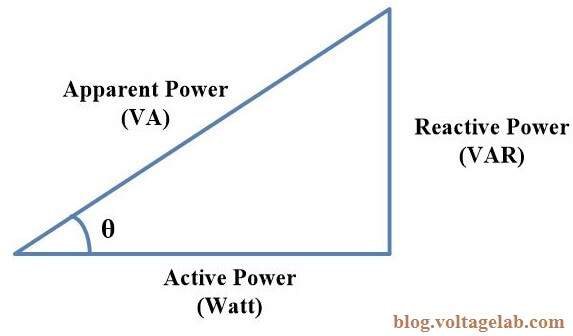
What is Q-factor?
Q stands for Quality, and the Q-factor means Quality Factor. We know that during series resonance, the potential difference across the inductance or capacitance increases many times more than the supply voltage.
The voltage amplification caused by resonance is called the Q-factor of a series resonant circuit. In a series resonant circuit, the Q-factor is expressed by L or C.
We know,
fr = 1/2π√(LC) . Here, fr = Resonant frequency, L = Inductance, C = Capacitance
So, 2πfr = 1/√(LC)
So, ωr = 1/√(LC) . Here, ωr = 2πfr
Q-factor = √(L/C) *1/R
Near resonance, the voltage amplifies in such circuits, which is why series resonance is also called voltage resonance.
What is a Resonant Circuit and Resonant Frequency?
Resonant Circuit
When the inductive reactance and capacitive reactance in an AC series circuit are equal, the circuit is called a resonant circuit, i.e., XL = Xc.
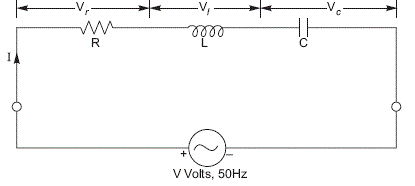 At resonance, the total impedance of the circuit, Z2 = R2 + (XL – XC )2
At resonance, the total impedance of the circuit, Z2 = R2 + (XL – XC )2
Thus, Z2 = R2 because XL = Xc.
Therefore, Z = R.
Power factor, p.f = Cosθ = R/Z = R/R = 1
Therefore, θ = Cos-11 or θ = 0
In other words, at resonance, the phase angle between current and voltage is zero, and the power factor is unity.
What is Volt-Ampere?
The vector sum of active power and reactive power is called Volt-Ampere, and its unit is VA.
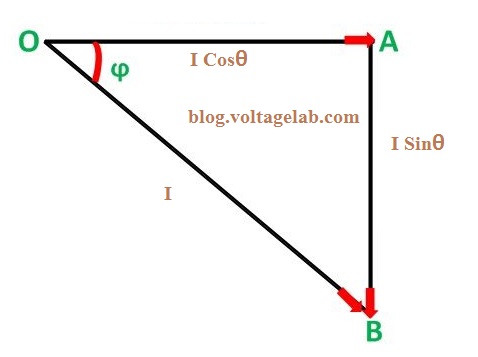
From the Pythagoras theorem, we get:
VA = √[(VISinθ)2 + (VICosθ)2]
= VI√[(Sin2θ + Cos2θ)]
= VI
What is Polyphase, and What is the Difference Between Polyphase and Single Phase?
Polyphase
A line consisting of two or more phases is called polyphase. Polyphase is typically used in industries. Polyphase can be 3-phase, 6-phase, 12-phase, etc.
Difference Between Polyphase and Single Phase
- Polyphase devices are more efficient.
- A polyphase motor can self-start, whereas a single-phase motor cannot.
- Polyphase motors require less wiring, and the losses are lower.
- A single phase can be easily supplied from a polyphase, but the reverse is difficult.
- Two types of voltages are available in a polyphase system, and it can supply both single-phase and three-phase loads.
What is Star Connection and Delta Connection?
Star Connection
Simply put, when three coils or windings located 120 degrees apart are connected at a common point, it is called a star or Y-connection.

Delta Connection
When three coils spaced 120 degrees apart are connected in such a way that the end of the first coil is connected to the beginning of the second, the end of the second to the beginning of the third, and the end of the third to the beginning of the first, it is called a delta (Δ) connection. This is also known as a mesh connection.
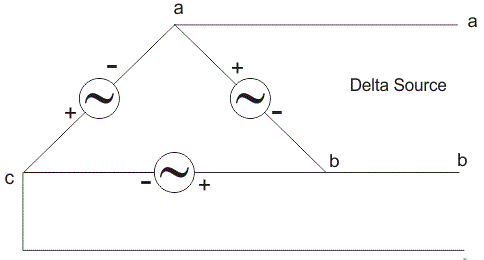
Advantages of Star (Y) and Delta Systems
Advantages of Star System
- Less wiring is required in a star system compared to a delta system to produce the same line voltage.
- In a star connection, less insulation is needed for the alternator for the same line voltage.
- The neutral point can be grounded in this connection, which protects the system during faults.
- Three-phase motors can be connected across the three lines.
Advantages of Delta System
- Delta connection is advantageous for rotary converters.
- It is a good connection for three-phase induction motors.
- It is beneficial to connect the secondary of a transformer in a delta configuration at the transmission end.
What is an AC and DC circuit?
An AC (Alternating Current) circuit is one in which the current changes direction periodically, flowing back and forth in a sinusoidal wave. This type of current is typically used in household power supplies. A DC (Direct Current) circuit, on the other hand, has current flowing in a single direction, from the positive to the negative terminal, and is commonly used in batteries and electronic devices.
What is the principle of an AC circuit?
The principle of an AC circuit is based on the alternating flow of electric current, where the current and voltage periodically reverse direction. The alternating nature of the current allows for efficient transmission of electricity over long distances, minimizing energy loss. In an AC circuit, components like resistors, inductors, and capacitors interact differently with the current, resulting in varying voltage and current relationships.
What is the formula for the AC circuit?
The basic formula for an AC circuit involves Ohm’s Law, which is V=IRV = IRV=IR, where VVV is the voltage, III is the current, and RRR is the resistance. For AC circuits, the impedance (Z) replaces resistance in the formula: V=IZV = IZV=IZ, where impedance accounts for both resistance and reactance (from inductors and capacitors). Additionally, the RMS (Root Mean Square) value is often used to calculate the effective voltage or current: VRMS=Vmax2V_{RMS} = \frac{V_{max}}{\sqrt{2}}VRMS=2Vmax.
What is called AC?
AC, or Alternating Current, refers to an electric current that periodically reverses direction in a circuit. Unlike DC (Direct Current), which flows steadily in one direction, AC varies in magnitude and direction, typically in a sinusoidal wave pattern. This type of current is commonly used for power distribution in homes, businesses, and industries due to its efficiency in transmitting power over long distances.



